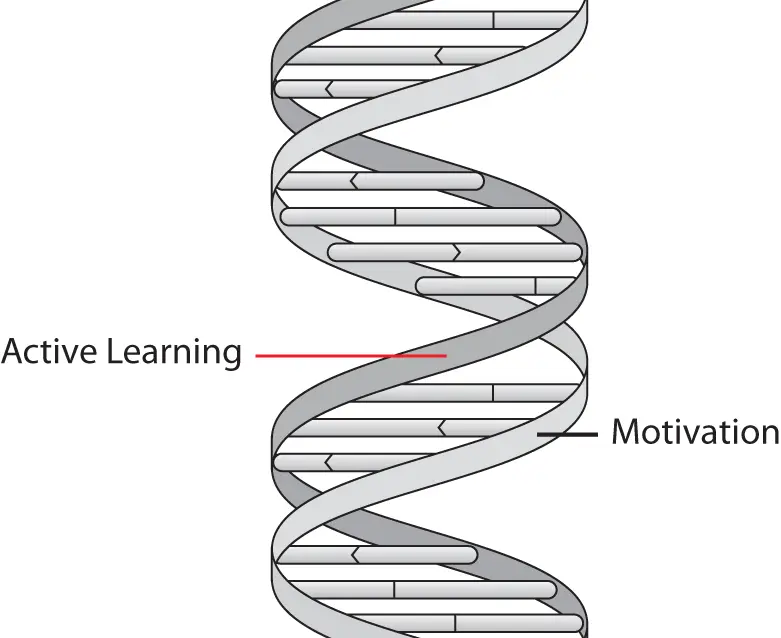Elizabeth F. Barkley - Student Engagement Techniques
Здесь есть возможность читать онлайн «Elizabeth F. Barkley - Student Engagement Techniques» — ознакомительный отрывок электронной книги совершенно бесплатно, а после прочтения отрывка купить полную версию. В некоторых случаях можно слушать аудио, скачать через торрент в формате fb2 и присутствует краткое содержание. Жанр: unrecognised, на английском языке. Описание произведения, (предисловие) а так же отзывы посетителей доступны на портале библиотеки ЛибКат.
- Название:Student Engagement Techniques
- Автор:
- Жанр:
- Год:неизвестен
- ISBN:нет данных
- Рейтинг книги:3 / 5. Голосов: 1
-
Избранное:Добавить в избранное
- Отзывы:
-
Ваша оценка:
- 60
- 1
- 2
- 3
- 4
- 5
Student Engagement Techniques: краткое содержание, описание и аннотация
Предлагаем к чтению аннотацию, описание, краткое содержание или предисловие (зависит от того, что написал сам автор книги «Student Engagement Techniques»). Если вы не нашли необходимую информацию о книге — напишите в комментариях, мы постараемся отыскать её.
— — — —
Student Engagement Techniques
"Student Engagement Techniques
"Student Engagement Techniques
"This book is an essential resource for faculty seeking to better engage with their students. Anyone seeking a clear, research-based, and actionable guide needs a copy of Student Engagement Techniques on their shelf!"
Student Engagement Techniques — читать онлайн ознакомительный отрывок
Ниже представлен текст книги, разбитый по страницам. Система сохранения места последней прочитанной страницы, позволяет с удобством читать онлайн бесплатно книгу «Student Engagement Techniques», без необходимости каждый раз заново искать на чём Вы остановились. Поставьте закладку, и сможете в любой момент перейти на страницу, на которой закончили чтение.
Интервал:
Закладка:

FIGURE 1.1.Double Helix Model of Student Engagement
Source: U.S. National Library of Medicine ( http://ghr.nlm.nih.gov/handbook/basics/dna.html).
It's essential to remember, however, that what is motivating to one student may not be so to another. A fundamental characteristic of active learning is that students must connect what is being learned to what is already known, and what one student already knows is not the same as what is already known by another. Thus, the blend of motivating factors and active learning that promotes student engagement is unique to each individual learner. Acknowledging that engagement is referenced individually, excellent teachers who create engaging classes manage to find ways to challenge and support students at many different cognitive and developmental levels as well as create an affective environment that helps all students feel as though their presence and participation in the course matters, so that they will exert the effort necessary to learn.
Engaged Learning Behaviors
Some models of student engagement list “behavior” as a type of engagement. For example, Fredericks et al. (2004) suggest that there are three types of student engagement: cognitive, emotional, and behavioral. This perspective has a ring of truth to it since we know from experience that engaged students often exhibit different behaviors from their disengaged counterparts. We, however, don't view behaviors as a type of engagement but rather as the outcome of engagement. Thus, we believe that student engagement leads to some specific learning behaviors. For example, students who are motivated to learn and are actively engaging intellectual effort in their learning will likely attend class, pay attention, take notes, participate in the discussion, turn in assignments, and so forth. The mental state of engagement and the physical act of learning behaviors are thus connected, but we see it as a causal relationship rather than a separate factor or type of engagement.
In his description of different levels of engagement, Schlechty (2011) offers some insight into the connection between mental state and behaviors. In particular, he describes five ways that students might respond to a learning task that illustrate different levels of engagement along with associated feelings, thoughts, and learning behaviors:
1 Engagement (high attention–high commitment): Students see that the activity is personally meaningful. Likewise, the students feel that their goal is to get the activity right and perform well, with or without extrinsic motivation. Students attend to the tasks they are engaged in, and they persist in the face of difficulty.
2 Strategic compliance (high attention–low commitment): Students see the value of the work and find the activity as worth doing, but only because of grades, approval, and class rank. Students are primarily seeking teacher recognition and peer appreciation. If the reward is removed, the students abandon the task.
3 Ritual compliance (low attention–no commitment): Students set learning at a low level of priority and are working only for the sake of compliance and on meeting the minimum requirements. They do the work only to avoid negative consequences such as getting a failing grade or mark. Their prime desire is to avoid teachers' reprimands and peer conflict. They do the bare minimum required of them.
4 Retreatism/noncompliance (no attention–no commitment): Students are disengaged in the task and activity and are emotionally withdrawn. They do not participate in the task, and feel unable to do what is asked and expected of them. They find ways to avoid the task that don't call attention to themselves. Schlechty says “they do nothing and bother no one” and they are skilled at “going to sleep with their eyes open” (p. 21).
5 Rebellion (diverted attention-no commitment): Students develop a negative attitude. They actively choose not to do the task and sometimes encourage others to rebel. They may instead listen to music or play a video game rather than complete the assigned task (pp. 15–21).
These five engagement levels show the interconnection between what students think and feel and how they may respond in kind with their actions. Through outlining these levels of engagement, Schlechty not only provides insight into learning behaviors that may signal different levels of engagement but also illuminates many ways in which students may or may not engage.
We note, however, that not all students who are engaged exhibit the behaviors described here, and not all disengaged students exhibit the same feelings about their learning. There are many issues that students face today that affect their willingness and ability to come to class, pay attention, and so forth. For example, students who are on the spectrum may not make eye contact, but they may be actively processing the information from a lecture. In addition, lack of engaged behaviors may not signal a lack of desire to engage. Overly tired students may want to engage, and may have the affect needed, but they may be physically unable to engage cognitively. So, while learning behavior can signal engagement, we can't assume that we can see engagement; mental states are by definition difficult to see and measure.
Documented Outcomes of Student Engagement
Researchers have demonstrated that engaging students in the learning process is related to increases in their academic achievement. As Coates (2005) points out, the student engagement research often is concerned with “the extent to which students are engaging in a range of educational activities that research has shown as likely to lead to high quality learning” (p. 26). Several researchers have indeed documented that increased levels of student engagement are positively related to increased student learning (see, e.g., Carini, Kuh, & Klein, 2006; Kuh, Kinzie, Buckley, Bridges, & Hayek, 2007; Glanville & Wildhagen, 2007). Pascarella and Terenzini's (2005, 2016) systematic review of the literature, for example, finds that “a substantial amount of both experimental and correlation evidence suggests that active student involvement in learning has a positive impact on the acquisition of course content” (2005, p. 101). In addition to improved learning outcomes, student engagement has been linked to other aspects of academic achievement, such as improved retention and persistence (see, e.g., Cruce, Wolniak, Seifert, & Pascarella, 2006; Krause, 2005).
Moreover, student engagement has been shown to help all learners to succeed, and thus it has an important social justice function. As Kuh (2009) argues, “Engagement has compensatory effects on grades and persistence for students who most need a boost to performance because they are not adequately prepared academically when they start college” (p. 685). He goes on to state that “engaging in educationally purposeful activities helps to level the playing field, especially for students from low-income family backgrounds and others who have been historically underserved” (689). The evidence is clear, according to Harper and Quaye (2009), who similarly state:
We are persuaded by a large volume of empirical evidence that confirms that strategizing ways to increase the engagement of various student populations, especially those for whom engagement is known to be problematic, is a worthwhile endeavor. The gains and outcomes are too robust to leave to chance, and social justice is unlikely to ensue if some students come to enjoy the beneficial by-products of engagement but others do not. (p. 3)
Thus, the costs of not striving for engagement for all are simply too high. It is imperative to seek to engage all students in their learning.
Читать дальшеИнтервал:
Закладка:
Похожие книги на «Student Engagement Techniques»
Представляем Вашему вниманию похожие книги на «Student Engagement Techniques» списком для выбора. Мы отобрали схожую по названию и смыслу литературу в надежде предоставить читателям больше вариантов отыскать новые, интересные, ещё непрочитанные произведения.
Обсуждение, отзывы о книге «Student Engagement Techniques» и просто собственные мнения читателей. Оставьте ваши комментарии, напишите, что Вы думаете о произведении, его смысле или главных героях. Укажите что конкретно понравилось, а что нет, и почему Вы так считаете.












